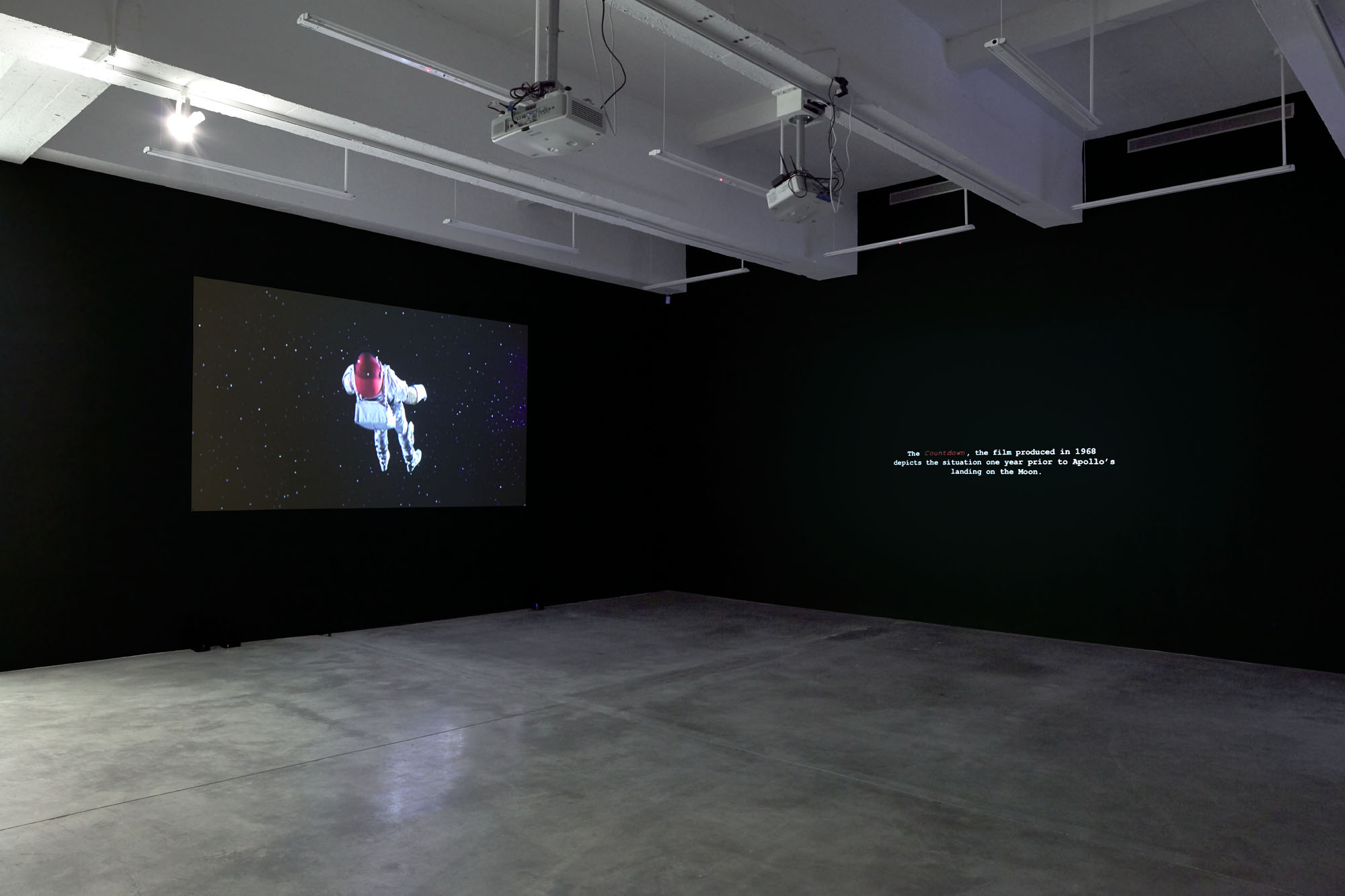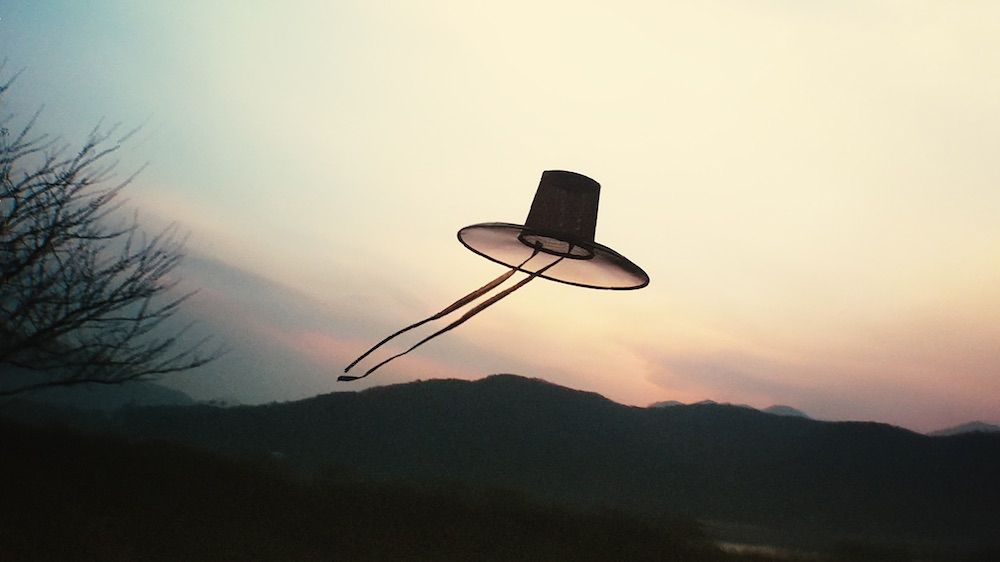Park Chan-kyong Explores History
By Bansie Vasvani

PARK CHAN-KYONG, Power Passage, 2004
In a recent talk and film screening arranged in conjunction with his current solo exhibition at Tina Kim Gallery in New York, Korean artist, writer and filmmaker Park Chan-kyong discussed his work under the topic “Colonial Unhiemlich.” Touching on the Freudian conception of “unheimlich,” or the uncanny feeling of something that is familiar yet discordant, Park illuminated his lengthy exploration of the dissonance of Korean identity, the notion of home in light of his country’s divisive history, and the politics of the Korean War.
In his first solo exhibition in the United States, four videos and photographs spanning more than a decade depict Park’s methodology of combining historical facts with his own phantasmagoric vision of a unified nation. In making Power Passage (2004–07), a two-channel video shown at the entrance of the gallery, Park was inspired by the actual launching of the ASTP (Apollo-Soyuz Test Project), the first joint US-Soviet space flight that took place in 1975. The video work was made by combining scenes from three Hollywood sci-fi films, Countdown (1968), Marooned (1969) and 2010 (1984), which reference various true and imaginary escapades in space. One particular historical scene of an American astronaut being rescued from floating away into space by a Soviet cosmonaut is symbolic of Park’s deep longing for a truce between South and North Korea; each country was at one point controlled by the US and the USSR, respectively. In Park’s sci-fi video time becomes blurred, and events from the past are laden with imaginary utopian, futuristic possibilities. Juxtaposed on an adjacent wall is a series of factual information and images of a secret tunnel, which was discovered under the DMZ (the demilitarized zone that separates the two Koreas) in 1975. Details about the tunnel, which was reportedly used to send North Korean spies into the South, introduces fragments of division, suspicion and dystopia in the video. Seen together, Park’s Power Passage is an amalgamation of utopian and dystopian images that appear and disappear like a dream.

PARK CHAN-KYONG, Power Passage (detail), 2004

PARK CHAN-KYONG, Power Passage (detail), 2004-07, still from two-channel video: 13 min. Installation view of Park Chan-Kyong at Tina Kim Gallery, New York, 2016.
Akin to literary scholar Julie Hakim Azzam’s description of the postcolonial gothic novel that arose in response to “certain social, political or historical conditions,” Park’s single-channel videos Flying (2005) and Blackout (2009) are poised between the realm of mystery and the search for the notion of home—the latter of which has a sense of “pastness” (in the words of Azzam) that is embedded in the present. In Flying, footage from a flight taken by then South Korean president Kim Dae-jung in 2000 to meet with the late North Korean leader Kim Jong-il captures the eerie uninhabited landscape of the north, while simultaneously suggesting the anticipation of hope. In the closing shot of Flying—which is set to music written by Korean-born German composer Isang Yun, who was tortured by the South Korean secret service in the 1960s for his support of Korean unfication—bouquets of welcoming, pink-colored paper flowers held by bystanders in North Korea form a blurry surreal curtain that encapsulates the impenetrable, “unheimlich” notion of home.

PARK CHAN-KYONG, Flying, 2005, still from video: 13 min. Courtesy the artist and Tina Kim Gallery, New York.
Park’s evocation of shamanistic rituals in his dramatic video Night Fishing (2011) is perhaps his most strident effort at reclaiming a Korean identity. Following his earlier exploration of shamanism in his 2008 film Sindoan, Park’s Night Fishing, which was shot with an iPhone 4, focuses on the strange death of a fisherman, whose spirit possesses a shaman in order to speak through her to his family. In showcasing a lost tradition, Park’s melodramatic shaman not only recalls the past, but her shrill performance also conveys the dissonance of reenacting relatively unknown traditions in the modern world of South Korea. Here, as in most of his works, Park treads precariously between what Azzam refers to as the idea of “home and not home, and the familiar and the foreign.”
Similarly, Three Cemeteries (2009) comprises Park’s photographs that pay homage to unacknowledged Korean sex workers who were recruited for American soldiers during the Korean War, as well as to soldiers who died fighting at the time, and the graves of escapees from the north. These images are disrupted by an accompaniment of sounds that represent the environmental ambience of each location in the photographs. Sounds such as from a firing range or a golf course prevent even those who died in service of their country from having a utopian ending—as the “unheimlich” notion of home upends any lasting memory of peace.

PARK CHAN-KYONG, Night Fishing, 2011, still from HD film: 33 min. Courtesy the artist and Tina Kim Gallery, New York.
Park Chan-kyong’s self-titled solo exhibition is on view at Tina Kim Gallery, New York, until July 1, 2016.







